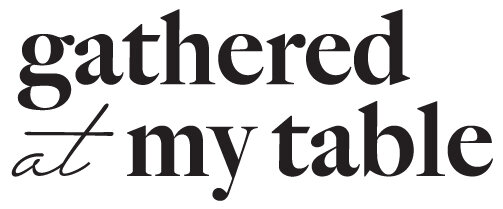Banana Tahini Breakfast Cake
/Happy banana bread season to all! Baked in those miniature, aluminum loaf pans and wrapped in cellophane, banana bread is the most traditional (and cheerful) way to say “Merry Christmas” to all your neighbors and co-workers. I remember when my sister and I were younger, we eagerly awaited these coveted banana bread gifts and since my mom was a teacher, we usually had multiple banana-y parcels gifted to us throughout the holiday season. It seemed like we waited all year for a cake that disappeared in under 5 minutes.
In high school, I decided I was tired of waiting until people gifted me banana bread for Christmas and taught myself how to make my own. I asked for my aunt’s recipe, changed a couple of things, and it became one of the first recipes that I perfected and put my own stamp on. I continued to make banana bread religiously throughout college, bringing it to friends and study groups, and I’m pretty sure that my banana bread played a factor when my husband decided to propose. But all through my banana bread making years, I had one qualm. I really hated the loaf thing. I don’t really like the way it looks, I don’t really like the way it slices into those little rectangles, and I really don’t like how little surface area there is to get that gooey top coat (you know what I’m talking about and it’s hands-down the best part of any banana bread). So I changed it. I took my famous “Anna Banana Bread” swirled it with tahini, and baked it in a cake pan because I like eating cake for breakfast.
This is a really simple recipe that requires one bowl and minimal ingredients. It can be still be baked in a loaf pan (if you really feel like you have to), but I encourage you to step out of your comfort zone and change things up a little. Swirl some tahini in your banana bread, you only live once.
Banana Tahini Breakfast Cake
Yield: 1 9” cake
Ingredients:
3 ripe bananas
1 1/2 cups all purpose flour
1 tsp baking soda
1/2 tsp salt
2 eggs, separated
1/2 cup granulated sugar
1/4 cup brown sugar
1 stick of butter, at room temperature
3 T tahini paste
Procedure:
Preheat the oven to 350 degrees and grease a 9” cake pan with butter, or spray with cooking spray.
In the bowl of a stand mixer fitted with the paddle attachment (or in a large mixing bowl using a hand mixer), beat butter for about 30 seconds. Add sugar and granulated sugar and cream until light and fluffy.
Add egg yolks, bananas, flour, baking soda, and mix on medium speed until combined.
In a clean bowl*, whip egg whites to stiff peaks. Using a rubber spatula, gently fold the beaten egg whites into the batter until combined, taking care not to deflate the air bubbles.
Pour the batter into the prepared cake pan. Dollop tahini across the top of the cake and swirl using a knife or a toothpick.
Bake for 35-40 minutes, until a toothpick comes out clean when inserted into the center and the sides of the cake begin to pull away from the pan.
Let cool slightly and serve warm with coffee or milk. :)
*Three little notes about whipping egg whites:
1- I did state that this is a one-bowl recipe, however it does require you cleaning that one bowl halfway through. You can use two bowls. When I make this with a hand mixer, I use a large glass measuring cup to whip the egg whites in. When whipping egg whites, it is really important there there is NO FAT in your whites (oil, butter residue, egg yolk). Fat inhibits the whites from creating air bubbles so you can whip all day and they will never stiffen if there is fat present. Make sure your bowl is CLEAN!
2- In this recipe, you are whipping the whites until stiff peaks form. This means that when you lift the whip or the beater out of the bowl, the whites on the end should create a little mountain that doesn’t fold back down over itself. You’re looking for a mountain, not a wave.
3- Lastly, when you add the egg whites to the batter, you should fold them in gently with a rubber spatula, taking care not to deflate all of those air bubbles you worked so hard to create. In this recipe, the baking soda is used to counteract the acid in the bananas so the bulk of your leavening is coming from the whipped egg whites. You want as many of those air bubbles as possible present in your final batter so you don’t end up with a banana pancake.



